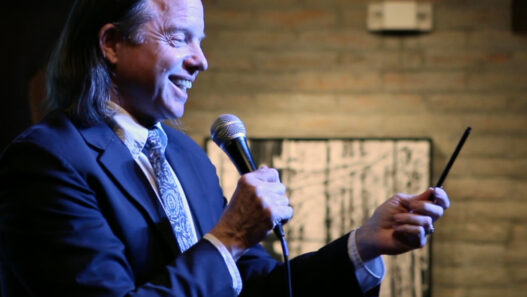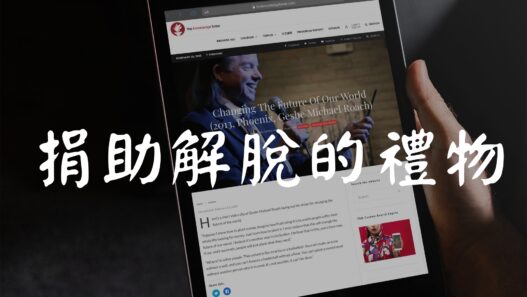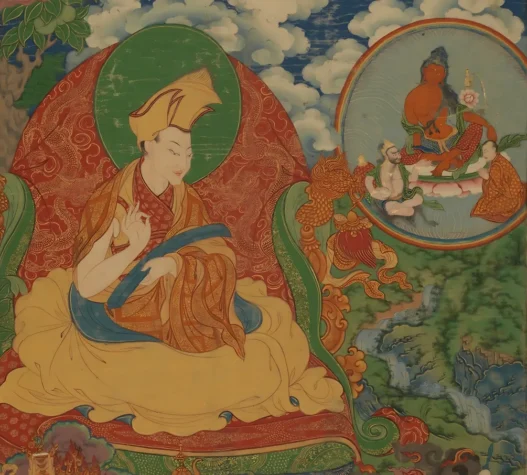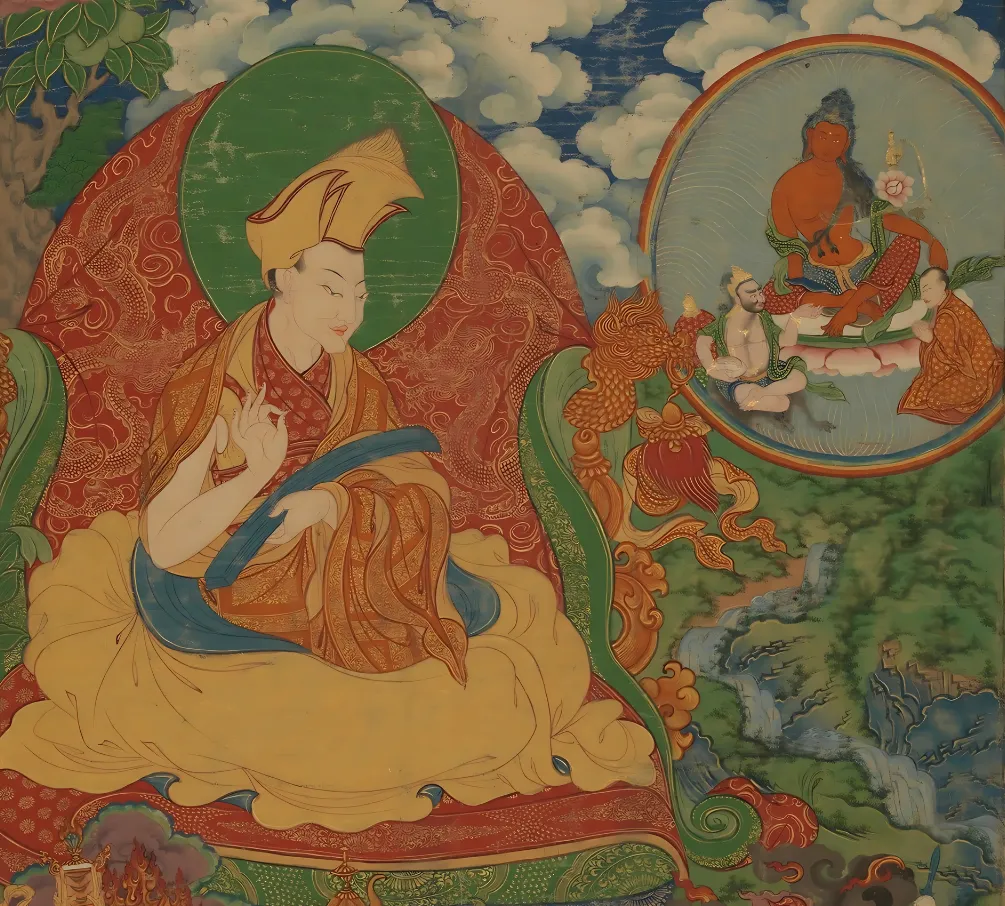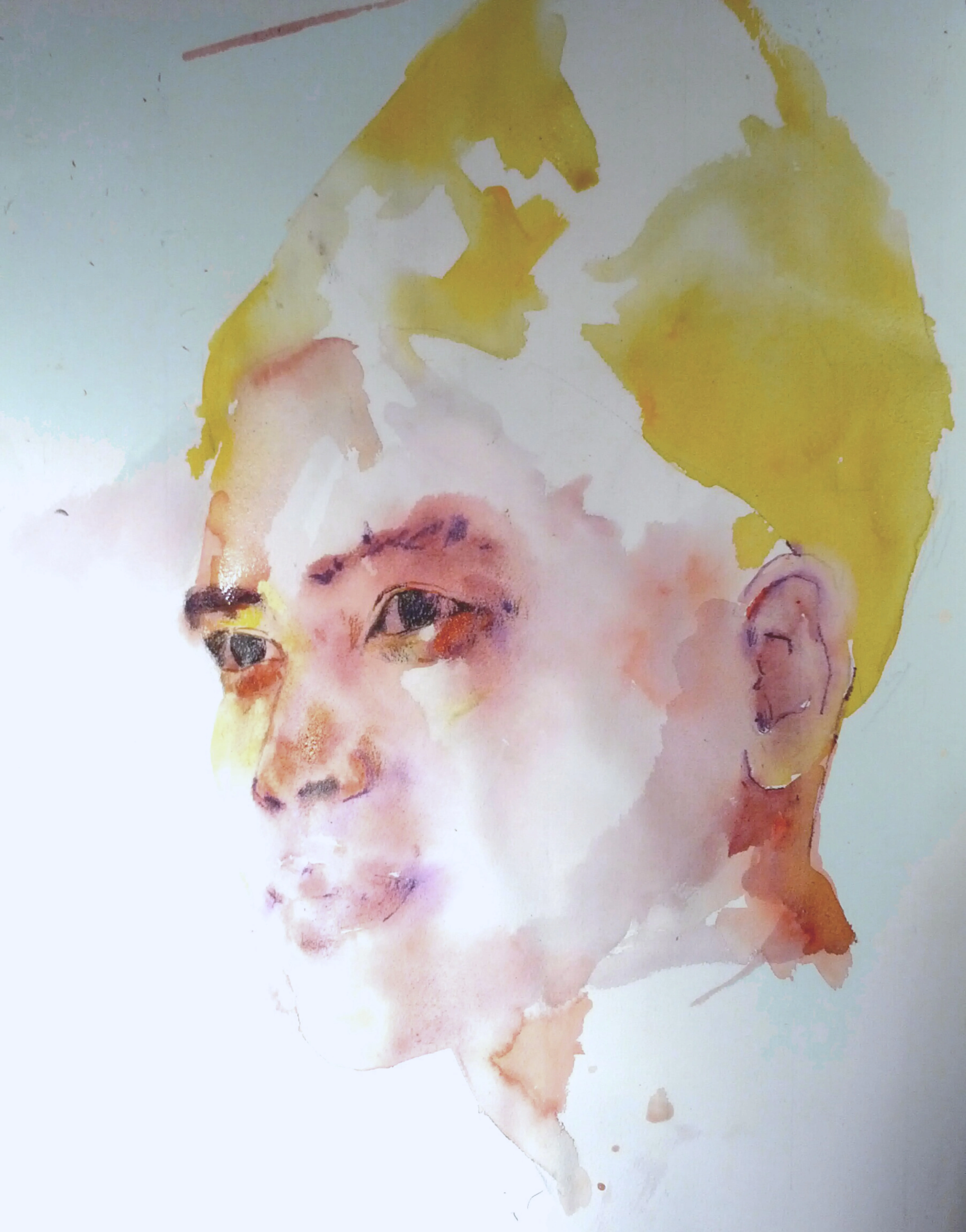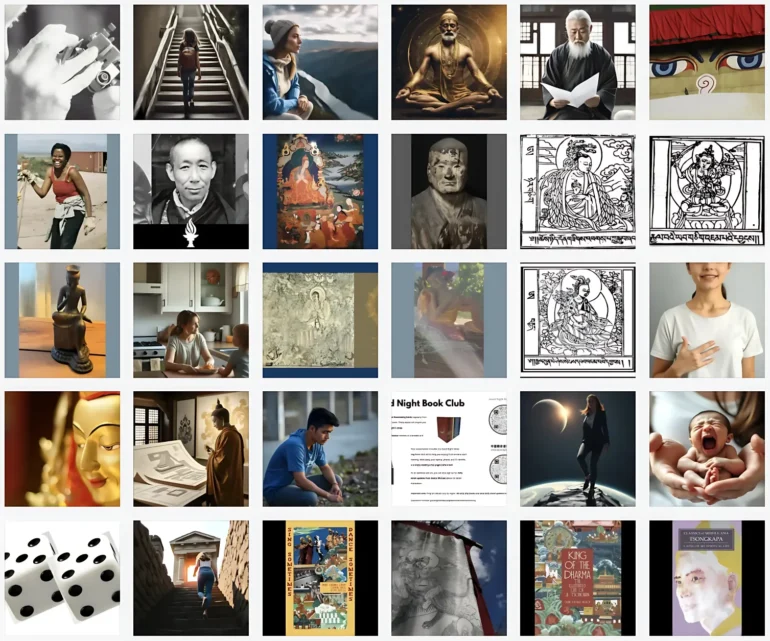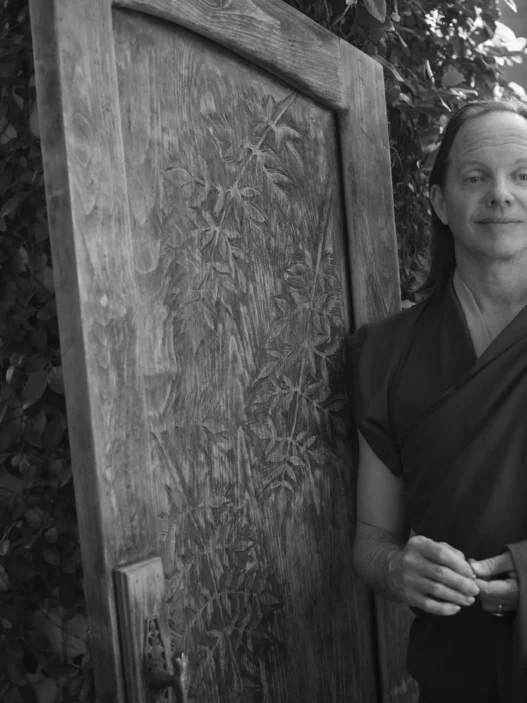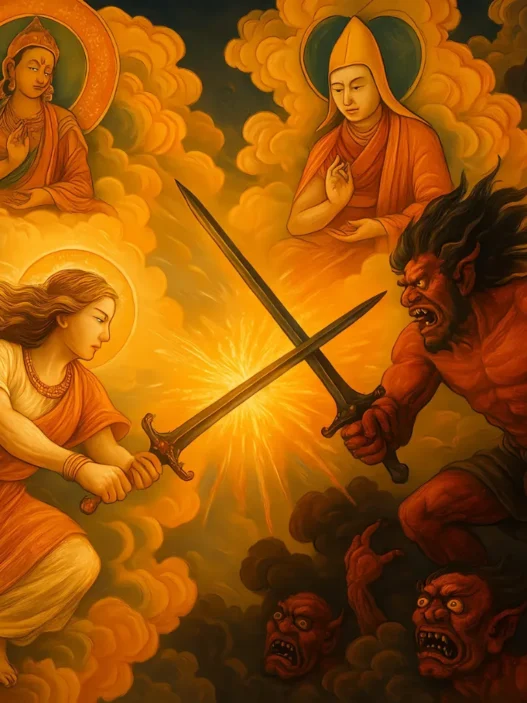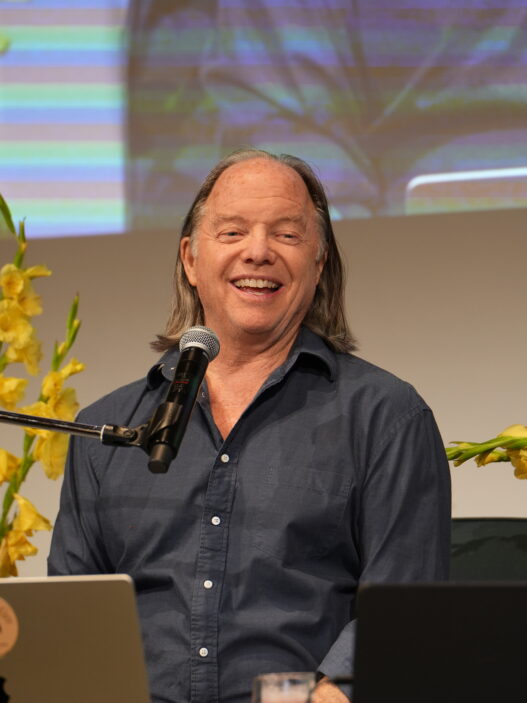背景與來源
這部非凡的教法源自佛教的悠久傳統——透過生動的辯論來揭示深層真理——在此,智慧與錯誤見解交鋒,有些顯然錯誤,有些則危險地接近真相卻仍稍縱即逝。這種學習方式不只是直接告訴你正確答案——它透過讓你與錯誤觀念搏鬥,淬鍊你的理解,使領悟比單純被告知正確答案更深刻、更持久。
完整的藏文原題為:
「這是一場曾經發生在智慧與其對手之間的辯論,對手名為『認為事物真實存在的傾向』。一切始於智慧試圖闡明『大圓滿(Mahamudra)』一詞的含義,在人生的三個階段:在事物對他們而言的平常狀態;在此人修行道路上的狀態;以及在此人達到修行果位時的狀態。」
本第 19 期課程將繼續逐行傳承此根本文本,由格西麥克·羅奇口述傳承風格演繹,並以清晰易懂的當代英語深入講解與探討。
第 19 期課程結構與重點
在本期 惡魔與天使的辯論 中,第 19 期課程涵蓋尊貴的第一世班禪喇嘛羅桑丘吉堅贊(1567–1662)所著根本文本的第 [326] 至 [350] 節。本段聚焦兩大主題:拒絕錯誤的打坐——將不思惟、不思考稱為捷徑——以及頌揚「現象與空性如密友」——彼此共生、相互彰顯。
開場時,惡魔提出激進主張:打坐即是什麼都不思考。他試圖將空性描繪為一種空無、缺乏明晰,並吹噓這種混淆使許多所謂的打坐者誤以為已大有所得。此法不僅錯誤,更具破壞性,助長誤解,浪費寶貴的修行動力。
智慧則展開生動而深遠的反駁。她詳細闡明,我們所經驗的一切皆因緣而生:從日月輪轉、四季更替、生老病死,到怒氣與慾望等心境。智慧表示,這些全是她的同伴——因為它們本無自性,唯因緣而現。
接著,智慧提出恢弘主張:現象與空性是不分彼此的密友。如同單腿無法行走、單翼無法飛行,現象與空性唯有同時存在方能彰顯。智慧宣稱,即使是大悲的覺醒,也與對其空性之覺知同時湧現。理解這種共依並非純粹理論,而是融於生活的觀點,將慈悲、明晰與智慧合而為一。
學員將探究錯誤打坐——如刻意「空無」或以雜念取代明晰——不僅無法實現真實的靈性進展,反而造成深遠危害,浪費難得人身,延誤解脫。文中惡魔所倡導之誤法,其實是高明而危險的陷阱,偽裝深刻卻加固無明。整場辯論正是對錯誤打坐的有力批判,清晰指出真正的禪修成就必須立基於正確的空性觀。
對於我們這一代而言尤其迫切,因為當代所傳的打坐法,無論有意或無意,往往重蹈惡魔在此辯護的覆轍——凸顯此教法對誠實修行者的重要與及時性。
本課程主要主題
1. 錯誤打坐:刻意隱蔽
惡魔推崇空洞與靜止之道,將其標榜為打坐。他將覺悟等同於止息、脫離與「不思考」,鼓勵學員「毫無所思」。智慧揭示,這並非靈性懶惰,而是一種主動欺瞞,終無所獲。
2. 緣起之網
智慧以緣起論為根基,進行有力反駁。她指出,所有存在——雨水、人情、身動、語言,乃至苦樂與四時——皆因緣生,非獨立自存;此乃現象與空性密不可分的證據。
3. 彼此成就的友伴
智慧進一步闡明最深刻見解:她與萬物如同密友,彼此依存。她言:「若無彼輩,吾亦無從而生;若無吾,彼輩亦不能現。」如同雙翼雙足,任何一方皆不可或缺。依緣共存,方能彰顯真實與意義。
4. 遠離二邊極端
第 19 期末,智慧論述現象與空性必同時現起。現象「證明無真自性」,並「破除凡斥零存之極端」。她喻之為「密友」與「慈悲雙生」,相互扶持、定義。即便大悲,也在認知其空性時同時湧現,猶如兩友競速,爭相現前。
此教法的重要性
此場辯論絕非純粹理論,而是切實的禪修路圖。關鍵在於解脫,或繼續受苦。
每當惡魔執著「事物必有實在」,便被智慧如鑽石般銳利明晰的反駁擊潰。此形式讓聽者透過觀照他人誤解,深化自我領悟,彷彿親眼見證無明一一瓦解。
關於授課者
格西麥可·羅奇將五十年傳統修行歷練與現代教學之明晰帶入此作。其口傳脈絡自堪布仁波切格西洛桑塔欽,經仁增仁波切、帕邦卡仁波切至宗喀巴,確保此口授評論歷久彌新、真實生動。
視頻
是一個視頻播放列表,從最近發布的課程開始。只需點擊觀看下一個視頻,即可觀看本系列的其他視頻。
音頻
背景与来源
这一非凡的教法源于佛教中通过热烈辩论揭示深刻真理的悠久传统——在此,智慧与错误观点交锋,有些明显错误,有些则危险地接近真相却仍偏离一步。这种学习方式不仅仅给你正确答案——它通过让你与错误观念搏斗来磨砺理解,使领悟比单纯告知更深刻、更持久。
完整的藏文描述标题是:
“这是一次发生在智慧与她的对手——名为‘倾向于认为事物真实’——之间的辩论。事情始于智慧在三个人生阶段分别辨识‘大手印’一词的含义:在人生常态中;在修行道路上;以及当人达到修行果位时。”
第19课沿用传统口传体系,由格西·迈克尔·罗奇逐句讲授此根本文本,并作深入评述,以清晰易懂的现代英语呈现。
第19课的结构与重点
在本次“魔鬼与天使的辩论”中,第19课涵盖第一世班禅喇嘛洛桑楚吉坚赞(1567—1662)根本文本的第[326]至[350]节。该部分聚焦两大主题:摒弃“虚妄禅修”——定义为什么都不想、不思考,却称其为“快速成效之道”;以及彰显“现象与空性互为挚友”——彼此共生、相互界定。
魔鬼以一个惊世提议开启:禅修应当“什么都不想”。他试图将空性描述为虚无、缺乏明晰,并吹嘘此混淆令许多所谓禅修者误以为已获大成果。这种做法不仅错误,且极具危害,助长误解,浪费宝贵的精神动能。
智慧随即发起生动而深远的反驳。她细致阐明:我们所经历的一切源于因缘——从日月、四季,到生死,再到愤怒与欲望等情绪状态。智慧说,这些皆为她的伙伴——因它们本无独立自性,仅因缘而生。
然后她提出宏大论断:现象与空性是亲密而不可分的朋友。如同万物无法仅凭一只腿行走,或仅凭一翼飞翔,现象与空性亦唯有彼此依存方才存在。智慧指出,伟大悲心的觉醒与其空性认识同步而生。理解此依存关系不只是智识概念——它成为将慈悲、清明与智慧融为一体的切身体验。
学员将探讨:何以试图“不思任何事”或以纷乱妄想取代清明的“虚妄禅修”不仅阻碍真实的精神进展,更带来深重危害,虚掷宝贵人身机缘,延缓解脱。贯穿文本的魔鬼所倡之误修,被揭示为极其精巧却危险的陷阱,假装深刻却强化了它们誓言要克服的无明。事实上,整个辩论成为对错误禅修的有力而持续的批判,昭示真正的禅定成就必须基于对空性的正确观。
对于我们这一代而言,此尤为紧迫:当今世界宣称的许多禅修,无论有意无意,均反映出此处魔鬼所辩护的同样错误——更显此教法对真诚修行者的重要性与及时性。
本课主要主题
1. 虚妄禅修:刻意的掩蔽
魔鬼宣传一种空白与不作为之道,称之为禅修,将解脱等同于寂静、脱离与“不思考”,鼓励人们“何事皆不思”。智慧揭露,这不仅是精神懒惰——更是一种主动的欺骗,令众人无所归。
2. 依存之网
智慧以依缘生起为根基,做出有力反驳。她宣称,一切存在——雨水、情感、肢体动作、语言,甚至苦难与四季——唯因依赖他法而生,不是实有之证,而是与现象不可分离的空性之彰。
3. 互为不可或缺的挚友
她继续指出辩论中最有力的洞见:她与诸法是挚友——彼此因对方而生。如她所言:“若彼等永不生,我亦无从生;若我从不生,彼等亦无从生。”犹如翼与腿,万物无法独立而立或动。正是此依存,让它成为真实且有意义。
4. 避免两种极端
第19课结束时,智慧描述现象与空性总是共同起现。现象,“证明万物非实有”,同时“摒弃一切皆无之二端”。她称二者为“挚友”与“等善双生”,解释二者互为依凭、共同定义。智慧指出,即使伟大悲心,亦在空性识悟之瞬同生——如两友竞速,看谁先现。
为何至关重要
此辩论绝非纯智识演练——它是一条禅定的路线图。所系重大,不啻解脱或苦难延续。
每当魔鬼执着于“万物必在”之见,智慧以其锐利、清澈、如钻石般的反驳将之击碎。此形式让听者借观他人误解被剥离,深化自身领悟。
关于老师
格西·迈克尔·罗奇以50年传统修炼与现代教学的明晰,将此教法呈现于世。他的传承脉络直追赐钵仁波切、特让仁波切、潘颇仁波切至宗喀巴大师,确保此口述评注真实而鲜活。
视频
是一个视频播放列表,从最近发布的课程开始。只需点击观看下一个视频,即可观看本系列的其他视频。
音频
Background and Source
This extraordinary teaching comes from a long tradition in Buddhism where deep truths are uncovered through lively debates—where Wisdom faces off against mistaken views, some obviously wrong and others dangerously close to the truth, but still just off. This way of learning doesn’t just hand you the right answer—it sharpens your understanding by letting you wrestle with the wrong ones, which makes the insight deeper and more lasting than simply being told what’s correct.
The full descriptive Tibetan title is:
“This is an argument which occurred one time between Wisdom and Her opponent, whose name was The Tendency to Think that Things are Real. It all started when Wisdom was identifying what the word “Mahamudra” meant, at three different stages in a person’s life: in the way things normally are for them; in the way they are as this person practices the spiritual path; and as they are when the person reaches the fruit of their practice.”
This Course 19 continues a line-by-line transmission of this root text with commentary and deep exploration by Geshe Michael Roach, following the traditional oral lineage style but delivered in clearly understandable contemporary English.
Structure and Focus of Course 19
In this installment of The Devil Debates an Angel, Course 19 covers verses [326] through [350] of the root text by His Holiness the First Panchen Lama, Lobsang Chukyi Gyeltsen (1567–1662). This section turns its focus toward two major themes: the rejection of false meditation—defined as meditating on nothing, not thinking at all, and calling this practice a fast path to results—and the celebration of appearance and emptiness as intimate companions—mutually arising and defining one another.
The devil opens the session with a dramatic proposal: meditation should involve not thinking about anything at all. He attempts to sell a view of emptiness as voidness, devoid of clarity, and offers it as a shortcut to enlightenment—even boasting that this confusion has led many so-called meditators to believe they’ve achieved great results. This approach is revealed to be not just mistaken, but actively harmful, encouraging misunderstanding and wasting precious spiritual momentum.
In response, Wisdom launches a vivid and far-reaching rebuttal. She carefully outlines how everything we experience arises from causes and conditions: from the sun and moon, to the seasons, to birth and death, to emotional states like anger and desire. All of these, She says, are Her companions—because they are empty of any independent nature and arise only through dependent origination.
She then makes a sweeping claim: the appearance of things and emptiness are intimate, inseparable friends. Just as nothing can walk with only one leg, or fly with one wing, appearance and emptiness exist only in relation to one another. Even the awakening of Great Compassion, Wisdom declares, arises simultaneously with the recognition of its empty nature. Understanding this dependence isn’t just an intellectual idea—it becomes a lived view that unifies compassion, clarity, and wisdom.
Students will explore how false meditations—such as trying to meditate on nothing at all or filling the mind with busy distraction instead of clarity—lead not only to a lack of authentic spiritual progress, but also to deeply harmful consequences, squandering the rare opportunity of a human life and delaying liberation. These misguided practices, championed throughout the text by the devil, are revealed as very sophisticated and dangerous traps that simulate depth while reinforcing the very ignorance they claim to overcome. In fact, the entire debate serves as a powerful and sustained critique of mistaken meditation, making clear that genuine meditative realization must be grounded in the correct view of emptiness.
This is particularly urgent for our generation, as much of what is taught as meditation in the modern world reflects, consciously or not, the very same errors that the devil defends here—highlighting how timely and essential this teaching truly is for sincere practitioners.
Major Themes in This Course
1. False Meditation as a Deliberate Obscuration
The devil promotes a path of blankness and inactivity, presenting it as meditation. He equates enlightenment with stillness, disengagement, and “not thinking,” encouraging students to meditate on “nothing at all.” Wisdom reveals how this is not just spiritual laziness—it’s a form of active deception that leads people nowhere.
2. The Web of Dependence
Wisdom responds with a powerful refutation rooted in dependent origination. She declares that everything that exists—rainfall, human emotion, bodily movement, language, even suffering and seasons—exists only in dependence upon other things. These are not evidence of real existence, but of emptiness inseparable from appearance.
3. Friends Who Cannot Exist Without Each Other
She continues with one of the most powerful insights in the entire debate: that She and all things are friends—each exists only because the other does. As She puts it, “If they could never be, neither then could I. Neither could they be if I myself never were.” Just like wings or legs, nothing can stand or move on its own. Everything depends on something else, and that very dependence is what allows it to be real and meaningful.
4. Avoiding the Two Extremes
Course 19 closes with Wisdom describing how the appearance of things and their emptiness always arise together. The appearance of things, She says, “proves that nothing is real” and “banishes the two extremes where nothing exists at all.” She calls them “intimate friends” and “twins of equal kindness,” explaining that each one supports and defines the other. Even Great Compassion, She says, is born the very moment we understand that it’s empty—like two friends racing to see who can arise first.
Why It Matters
This debate is far from being an intellectual exercise—it is a meditative roadmap. The stakes are nothing less than liberation or continued suffering.
Each time the devil clings to the idea that things “must really be there,” he is struck down by Wisdom’s sharp, clear, diamond-like refutations. This format allows the listener to deepen their own insight through vicarious contemplation, as if personally watching their misconceptions being stripped away.
About the Teacher
Geshe Michael Roach brings 50 years of traditional training and modern teaching clarity to this work. His lineage traces directly from Khen Rinpoche Geshe Lobsang Tharchin back through Trijang Rinpoche, Pabongka Rinpoche to Je Tsongkapa, ensuring that this oral commentary remains authentic and alive.
Course Materials
Video
This is a video playlist starting with the most recently posted class. Just click for the next video to see additional videos in the series.
Audio
You can review all of the other teachings in this series by clicking the image below:
- Idims: 開啟金剛道之門:五所學院 第1課 (2025,美國亞利桑那州) - 21 5 月, 2025
- 《惡魔與天使的辯論》第 19 回:五房課程 1 (2025 年,亞利桑那州) - 12 5 月, 2025
- 開啟金剛道之門:五所學院 第1課 (2025,美國亞利桑那州) - 6 5 月, 2025

